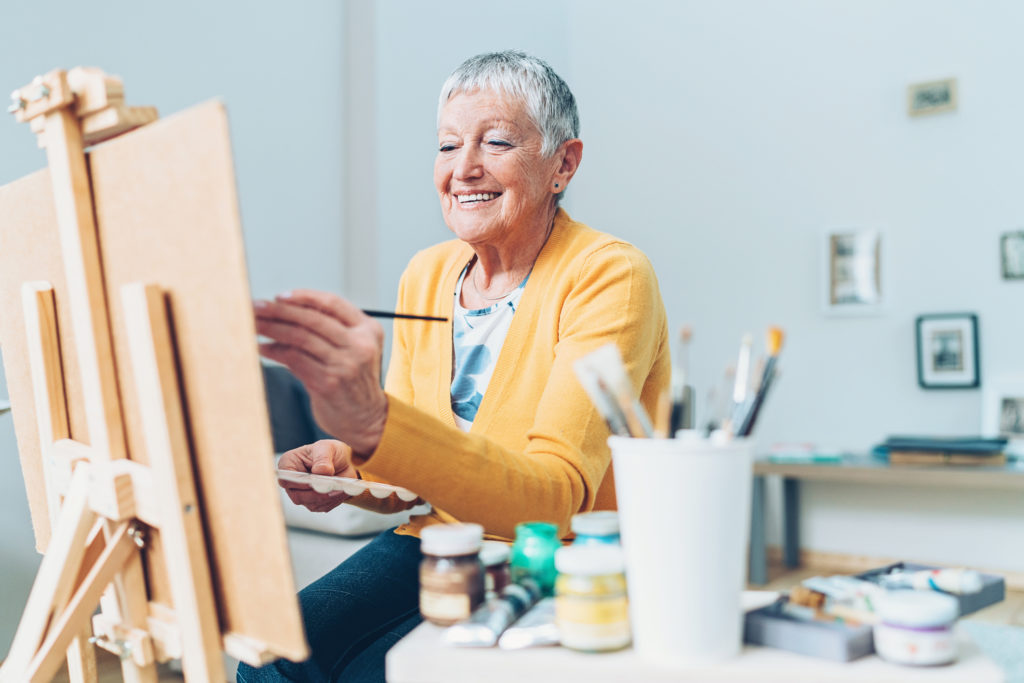How the Creative Arts Help Heal

“The medical profession has come a long way in recognizing the healing benefits of art. My hope is that someday the arts will be considered as significant in everyone’s lives as breathing fresh air, eating clean foods, and performing physical exercise.” – Renée Phillips
It shouldn’t come as a surprise to anyone involved in the health care profession that the creative arts can be a powerful healing medium. The idea that participating in creative endeavors can be a source of restoration and rejuvenation has been embraced by many different cultures, religions and societies. Throughout history, people have used drawing, music, dancing, and storytelling as a means to create wellness. Many healing rituals involve chanting and music.
Creative expression reduces stress …
As it turns out, nearly everyone can benefit from participating in the arts. Research has shown that creative expression can lower stress, boost self-esteem and engage the mind. A study published in Art Therapy showed that just 45 minutes of creating art – which included drawing with markers, modeling with clay and/or making collages – lowered the levels of cortisol (a stress hormone) in 75 percent of participants, regardless of their skill level. Just under half of the study participants reported that they had limited experience in making art.
… and stimulates the mind
A Mayo Clinic study published in Neurology showed that people who engaged in the arts – such as painting, drawing and sculpting – in both middle and old age were 73 percent less likely to develop mild cognitive impairment (MCI) than those who didn’t engage in artistic endeavors. Those who passively participated in the arts – such as going to the theater, concerts or the movies – were 55 percent less likely to develop MCI.
The effect of the arts on people living with dementia
The ability of the arts to strengthen the mind has inspired many health care providers to use creative endeavors to help enhance the lives of those living with memory loss. Music & Memory is a nonprofit organization that creates personalized music programs for older Americans, including those living with dementia. A Brown University study found that senior living communities that adopted the Music & Memory program saw a significant decline in residents using antipsychotic drugs and engaging in disruptive behaviors compared to those communities that didn’t adopt the program. The documentary film “I Remember Better When I Paint” shows how painting can help enrich the lives of those living with Alzheimer’s. A study published in the Canadian Journal of Neurological Sciences focused on Mary Hecht, a sculptor who was diagnosed with vascular dementia. She was able to draw detailed sketches and portraits, all from memory, of people she met or of earlier drawings she had created. Artistic abilities, at least in some cases, seem to be preserved in spite of the loss of memory.
The arts as a tool in physical therapy
A study published in Clinical Rehabilitation discovered that creative art therapy, when combined with physical therapy, decreased depression and improved function and quality of life for stroke patients. Harvard Health Publishing suggests that music therapy enhances people’s physical, psychological, cognitive, and emotional functioning during physical rehabilitation.
Creating better health
If you’re struggling with a health challenge, consider picking up a paint brush, learning to play the guitar, joining a dance group or writing your memoirs. In addition to feeling better, you may just inspire others with your works of art.
![CPT Rehab [logo]](https://www.cptrehab.com/wp-content/themes/cpt-rehab/images/logo.png)